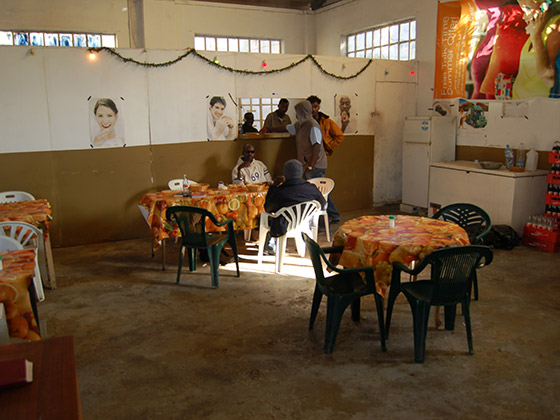The role of Art in social and political contexts
Warsame A Garare
Overview of the situation
The dignity of every human being is inscribed in article 1 of the 1948 Universal Declaration of Human Rights, a promise of ‘equality and dignity’ for all people, in all countries across the world. The opportunity for African migrants to legally enter countries perceived to be a safe haven is next to impossible. There are thousands who have lost their lives every year in search of a place of refuge. Equally inequitable is the fact that an unreasonably high number of migrants are detained or discriminated against and placed in conditions of hardship. These practices are happening in advanced democratic societies who themselves have significant diasporic communities, a blind spot for the governments and citizens of host countries. One possible interpretation for this could be described as a ‘politics of social distance’, an arrangement that distinguishes “Us and Them”, and by consequence leads to an imposition that can easily be imposed on powerless people seeking a better life. Italian philosopher Giorgio Agamben has described this intolerable situation for migrants as ‘bare life’, host countries enforce a state of exception outside of the normal legal framework, legalising the use of detention and incarceration.
Sadly, it is also a reality in the current climate that those who are fortunate enough to survive life-threatening journeys across the Sahara Desert and the Mediterranean Sea arrive to face further hardship when they are subjected to often horrendous treatment by many European receiving countries. Accordingly, the situation of African migrants who arrive in Spain, many in Madrid have also endured cruel hardships during their journeys, they share a common struggle with others in the same situation in Southern Europe. The Manteros – (so called in Spain because of their use of a blanket to display their marchandise) are not exempt from this either; however, what touched me most during my visit is how their lives fade into oblivion; they are in constant fear of police crackdowns while struggling to survive in their daily lives. Most of those I spoke to informed me that they didn’t choose to become illegal street venders or Manteros as they are called but had no other option, they are undocumented and cannot work legally, they are living in an enforced state of limbo hoping that one day their situation will be regularized. However, the reality on the ground is that those who are caught by Police on the streets of Madrid are fined, their goods seized and they are detained for deportation if they cannot show identification proving the right to reside and work in Spain.
What is The Role of Collaborative Art in Society?
Collaborative art functions in a way that is unlike the operation of state power structures, the enormity of the task in supporting migrants to live in a state of ‘equality and dignity’ must not deter us but encourage us to prioritise and mobilize the values of non-hierarchical art to generate critical and creative thinking outside of the box.
My expectation of art is to shed light on the (unequal) power-structures society is bound by as well as creating the potential of agency for migrants who have been excluded and Othered by hegemonic European migration policies. I also think art has to generate a space of potentiality, to be non-prescriptive and activist. Socially engaged art presents us with an opportunity to avoid the choke hold of neoliberal economic policies functioning outside the limitations and constraints of the mainstream galleries and a media industry that reflects the ideological position of the wealthy, collaborative art can reveal fresh perspectives and open up dialogues with groups like Manteros who are suspicious of everything that surrounds them because of a perceived immanent threat to their survival from both the state and unsympathetic citizens.
The objective of this art project with the Manteros community according to the team (Alex & Amp and Byron) was the hope that art would provide a way for the Manteros to regain their own agency and have the confidence to tell their own stories, in a way re asserting a sense of ‘home’ and a promise of ‘equality and dignity’. When I arrived from Ireland to participate in the project, my perception was that I would not have any difficulties to ‘integrate’ and contribute to the Assembly because I had shared a similar history having made the journey from my home in Mogadishu to reach Europe but that assumption soon evaporated. I now realise the how difficult it is to explain the objective of the project. The main objective as I understand it is to share the tools that will encourage participants to tell their stories, their dreams and their anxieties in a ‘universal language’. Alex expressed this feeling in our first meeting. It is clear that the artistic line of this temporal art work in the framework of CAPP has its own difficulties — this is particularly acute because the idea of what art means and its potential to transform is understood very differently between the various participants. However, what is clear is that the goal of any collaborative art work is to move us out of our comfort zones and deal with unfamiliar challenges.
It is important that we recognize that art can be used as a powerful advocacy to tell stories, but art can also provide a tool for self-development and personal expression, this is not a panacea for the Manteros but instead an incremental step towards transformation, there is a growing need for similar projects to harness a creative process and actively assert the claim by the UN Declaration of Human Rights, a promise of ‘equality and dignity’ for all people.
